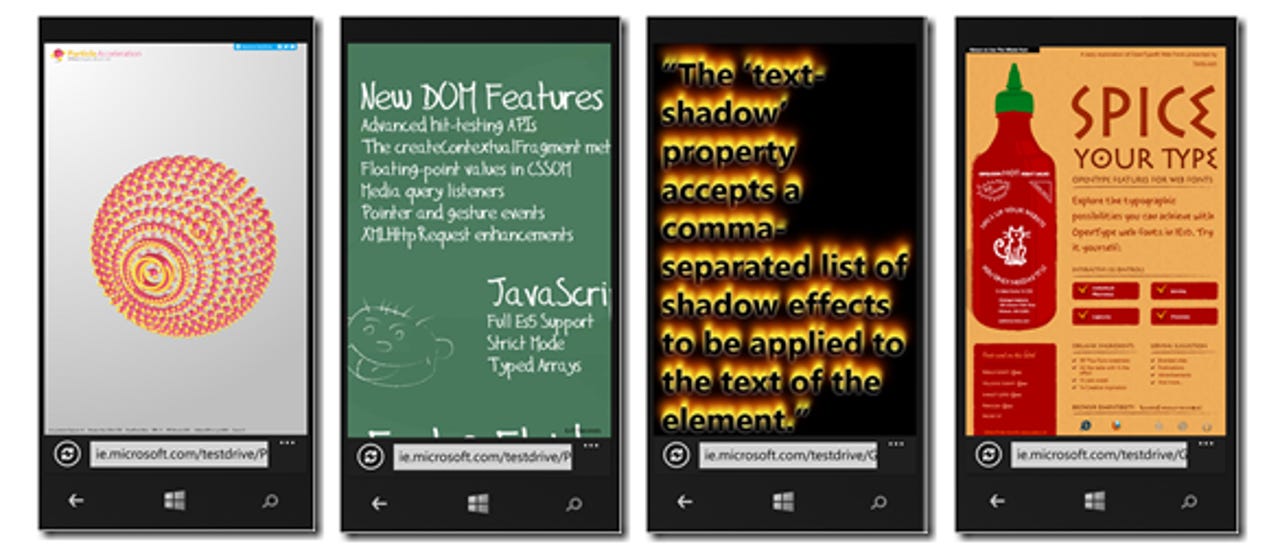Microsoft's IE 10 for Windows 8 and Windows Phone 8: What's different

Microsoft's Internet Explorer (IE) team is finally at the point where it is releasing new versions of its browser on Windows and Windows Phone roughly in tandem.

Given Windows Phone 8 now runs on a Windows NT kernel, are the two IE10 browsers (mobile and PC) identical, feature-wise? The answer is not 100 percent, according to a November 8 "Developing for Windows Phone" blog post.
IE10 for Windows Phone does not support the following, the post says:
- Inline video
- Some of the new manipulation views APIs (application programming interfaces) for touch panning and zooming, with the exception of –ms-touch-action
- Multi-track HTML5 audio (simultaneous)
- ActiveX and VBScript
- Drag-and-drop APIs
- File access APIs with the exception of blobs which are supported on Windows Phone 8
- Windows 8 integration features: Link previews, pinned site icons & notifications and support for connecting sites to apps
- Also in Internet Explorer 10 for Windows Phone, Window.open does not return a valid window object. This is because on the phone each “window” is isolated in its own sandbox.
Up until last week, when Microsoft finally rolled out the public version of the Windows 8 software development kit, Microsoft officials were advising Windows Phone developers to use IE10 to do early testing of their sites for compatibility. With the SDK, developers now can use the included emulator to test their sites directly on Windows Phone 8.
One of Microsoft's messages at its Build developer conference last week was that "HTML5 is coming to Windows Phone in a BIG way," as the blog post's author Program Manager Jorge Peraza concluded.
But the reality is a little more complicated, as Shawn Wildermuth, a Microsoft Most Valuable Professional, author of a number of development and Windows Phone books noted in a recent blog post of his own.
"The big benefit of Windows Phone 8's ability to create HTML5/JS application isn't in the SDK...it's in the operating system: IE10. IE10 is a much more complete browser and includes support for key features that made mobile apps and site difficult including Strict Mode and Touch APIs. With that rectified, HTML5 applications on the platform are indeed easier to build and better than before, but they are not Windows 8 JavaScript applications running on the phone."
Wildermuth said the inclusion of a built-in template for HTML5 phone application implies developers can now write Windows 8-style JavaScript applications, but that this isn't true. More code can be shared between Windows Phone 8 HTML5 apps and WIndows 8 JavaScript apps, but user-interface code cannot, Wildermuth emphasized.